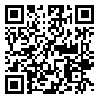BibTeX | RIS | EndNote | Medlars | ProCite | Reference Manager | RefWorks
Send citation to:
URL: http://jdisabilstud.org/article-1-3526-en.html
2- Associate Professor, Psychology and Education of Exceptional Children Group, Faculty of Psychology and Educational Sciences, Tehran University, Tehran, Iran
3- Assistant Professor, Children and Adolescents Psychology Group, Yazd Medical Sciences University, Yazd, Iran
4- Distinguished Professor, Psychology and Education of Exceptional Children, Faculty of Psychology and Educational Sciences, Tehran University, Tehran, Iran
Abstract
Background & Objectives: Stuttering is a multifaceted and complex psychomotor disorder that occurs during the natural flow of speech. In addition to motor control, this disorder involves the individual's linguistic function and is accompanied by various behavioral, emotional, and attitudinal changes. To devise a treatment for stuttering, a comprehensive approach is needed to assess this disorder because stuttering is accompanied by characteristics that can sometimes be easily measured (such as apparent disfluency) and sometimes less easily measured (such as reaction to stuttering). Stuttering is affected by emotional, cognitive, motor, linguistic, and social factors and is subject to change under the influence of social and cultural structure. Many factors affect stuttering, and identifying and evaluating these influential factors is difficult and time–consuming. However, the multidimensional perspective of stuttering and the impact of different dimensions of its components on speech fluency can address this issue. So, this study aimed to investigate the cognitive and linguistic components of the CALMS test in 7– to 14–year–old students with stuttering in Yazd City, Iran.
Methods: The present study was a cross–sectional analytical study lasting 10 months. The study's statistical population consisted of all primary school children with stuttering aged 7 to 14 living in Yazd in the academic year 2019–2020. The statistical population included 90 girls and boys with stuttering who were referred to speech therapy and rehabilitation centers in Yazd Province by the subject's family, speech therapists, psychiatrists, psychologists, and other professionals related to speech therapy and rehabilitation centers. According to Krejci and Morgan's table (1970), 74 people were included as the sample group in the study. Meanwhile, using the available sampling method (due to clinical limitations in sampling subjects in terms of space and time), children meeting the research criteria were selected for this study. The inclusion criteria were stuttering for at least six months, being between 7 and 14 years old, being a monolingual child, and having a normal IQ. The exclusion criteria were dissatisfaction with participating in the study, having comorbidity with other psychiatric disorders, and having severe physical illnesses (such as diabetes, asthma, and cardiovascular disease). The CALMS test (cognitive, affective, linguistic, motor and social components of school–going children) (Healy, 2012) and a demographic information form were used to collect data. In this study, the cognitive and linguistic components of the CALMS test were examined. The Pearson correlation coefficient, the independent t test, and the 1–way analysis of variance were used using SPSS version 23 software for data analysis. The significance level of statistical tests was 0.05.
Results: The results showed a significant and positive relationship between the total score of the cognitive component and age in stuttering students (p<0.05). In addition, a significant and negative relationship was observed between the total score of the linguistic component and the time of diagnosis of stuttering (p<0.05). Also, there was a significant difference between girls and boys with stuttering in the linguistic component (p=0.021), but there was no significant difference in the cognitive component (p=0.810). Further, there was no significant difference between the cognitive (p=0.823) and linguistic (p=0.641) components of the CALMS scale in stuttering students by their educational level.
Conclusion: The evaluation of cognitive and linguistic components of individuals with stuttering revealed that intervention should be carried out at a young age for more effective and efficient treatments. The age of diagnosis and the time of intervention can be of double importance; of course, in this regard, paying attention to the gender of the individual with stuttering is also important.
| Rights and permissions | |
 |
This work is licensed under a Creative Commons Attribution-NonCommercial 4.0 International License. |



